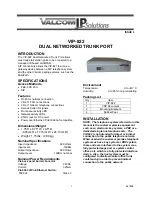
226
multicast packets transmitted in this VPN are forwarded along this share-MDT, no matter at which
PE device they entered the public network.
•
A share-group is assigned a unique switch-group-pool for MDT switchover. When the rate of a VPN
multicast stream that entered the public network at a PE device exceeds the switchover threshold, the
PE chooses an idle address (namely, switch-group) from the switch-group-pool, and encapsulates
the multicast packets for that VPN using that address.
•
All the ingress PE devices in the network monitor the forwarding rate on the share-MDT:
a.
When the rate of a VPN multicast stream that entered the public network at a specific PE device
exceeds the threshold, the PE device initiates an MDT switchover message to the downstream
along the share-MDT. This makes a switch-MDT to be built by using the switch-group between
that PE device and the remote PE devices with receivers downstream.
b.
After a switch-delay period has passed, an MDT switchover process starts.
All VPN multicast packets that have entered the public network at that PE device are encapsulated
into public network multicast packets using the switch-group, instead of using the share-group, so
that they are switched from the share-MDT to the switch-MDT.
NOTE:
A VPN uniquely corresponds to an MD and an MD serves only one VPN, which is called a one-to-one
relationship. Such a relationship exists between VPN, MD, MTI, share-group, and switch-group-pool.
For more information about MDT switchover, see "
PIM neighboring relationships in MD-VPN
Figure 62
PIM neighboring relationships in MD-VPN
PIM neighboring relationships are established between two or more directly interconnected devices on
the same subnet. As shown in
, the following types of PIM neighboring relationships exist in
MD-VPN, as follows:
•
PE-P neighboring relationship
—PIM neighboring relationship established between the public
network interface on a PE device and an interface on the P device across the link.
















































